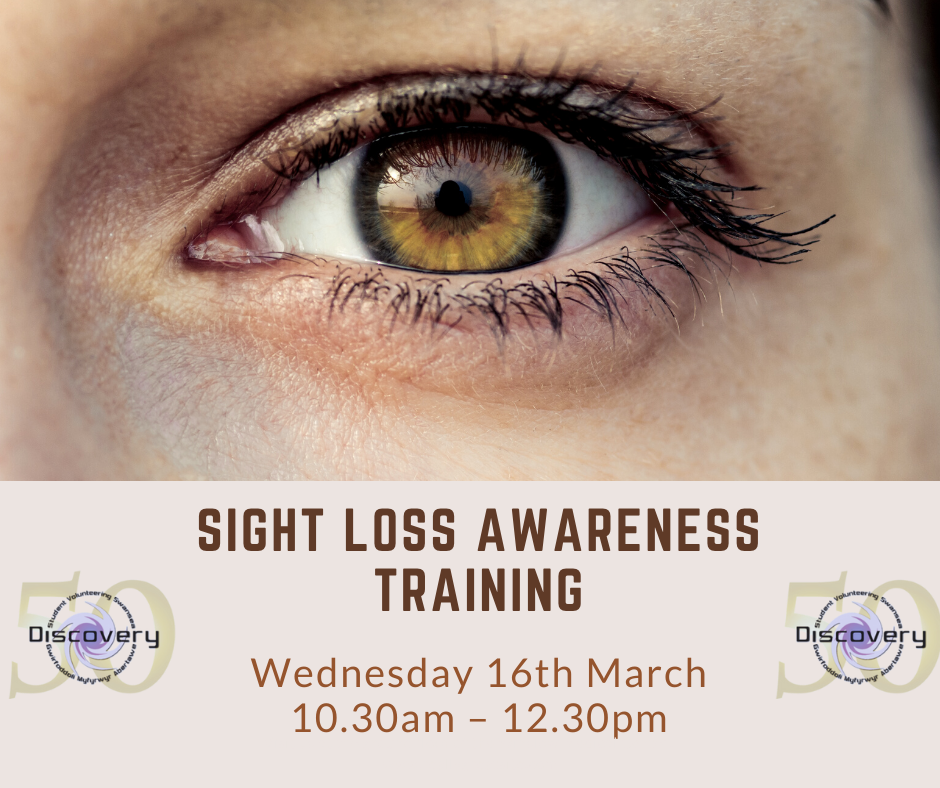Sight Loss Awareness Training

Today, I attended the Sight Loss Awareness Training, a 2-hour session held on zoom. The training was run by Susan Thomas and Mike Davies, both visually impaired, giving out a first-hand experience of what it is like to experience sight loss.
We were shown a range of pictures to see what it is like to have different eye conditions – this was very intriguing and impactful. It was a great visual way for us to understand how it is for the visually impaired individual to see and the issues these impairments could have with daily activities.
Types of visual impairments
Loss of Central Vision
Loss of Peripheral (side) Vision
Blurred Vision
Generalized Haze
Extreme Light Sensitivity
Night Blindness
Charles Bonnet Syndrome
Barriers for visually impaired people
Isolation
Getting out and about
Confidence in abilities and independence
Inability to drive and getting on public transport
Cannot see different light changes
Falls, dangers, risks much higher of getting hurt/harmed
Stairs, steps, curbside judging distance of the steps
Guides and aids
Canes – mobility canes are a form of mobility aid that enables blind or visually impaired people to go about their daily business when out and about, especially in unfamiliar areas.
Guide dogs – a dog that has been trained to lead a blind or partially sighted person.
Mike showed us a range of different canes, their usages, and how different coloring of the canes, such as red and white, are used to distinguish hearing and sight impairments.
Creating content with visual impairments in mind
Black Text on a yellow background is excellent.
Blue text on a white background is perfect
Nothing should go out under 14 fonts
Best not to underline as it can make things hard to see
Technological advances
Developments in technology have enabled a wide range of resources to be made to assist individuals who have visual impairments.
Iphones, in particular, are handy. There is a range of tools to help individuals with accessibility issues, such as magnifying glasses, dictation, personal assistants, etc.
Sight Loss assisting apps and software
Seeing AI
BeMyEyes
Dolphin Connect
Alexa and Siri
GPS and voice-over for directions with a route map.
Smart Tvs, Sky HQ, Amazon, Alexa, put eastenders on etc.
Gadgets
Colour detector – handheld device you hold it on the colour and then it tells you what the colour is but these gadgets are not cheap.
Pen Friend – label an object with a little sticker and then scan the item, and it will tell you that it is. Susan showed us an example with a box of Kenco cappuccino coffee; the device comes with little round stickers, then you record with the buttons what is in the box. Approx. £80
Glow matt – put a glass of water on there at night so you can see it is glowing to get a drink at night without tipping it/smashing it.
Water level – put on the side of a glass to stop you from filling it and then overflowing.
Torch – by the bed in the case of a power cut.
Elastic Bands – put an elastic band on the condition bottle so that you determine which bottle is shampoo and conditioner.
Risen silicone stickers are stickers stuck onto remote controls, e.g. volume button, so you can locate it easier.
Saucepan device – a little metal disk that you put in your Saucepan that starts rattling when water is boiling
Coloured chopping boards – Use boards that are contrasting colours to the food item.
to have more accessible lives
The Sunflower Lanyard is a green lanyard that’s decorated, as you might expect, with yellow sunflowers. Raising awareness of hidden disabilities, this lanyard is a sign that the wearer might need some extra support.
The session was very informative, and I felt that I learned a lot about visual impairments in a short space of time. I will be more mindful in the community and always do my best to help individuals who may have visual impairments.

Be a blind or low vision person’s eyes via an app. When the app buzzes, a blind or low vision person needs help with a task. Via a live video call, you can help and guide them through it. To volunteer go here https://www.bemyeyes.com/ and don’t forget you can log all your virtual volunteering hours.
